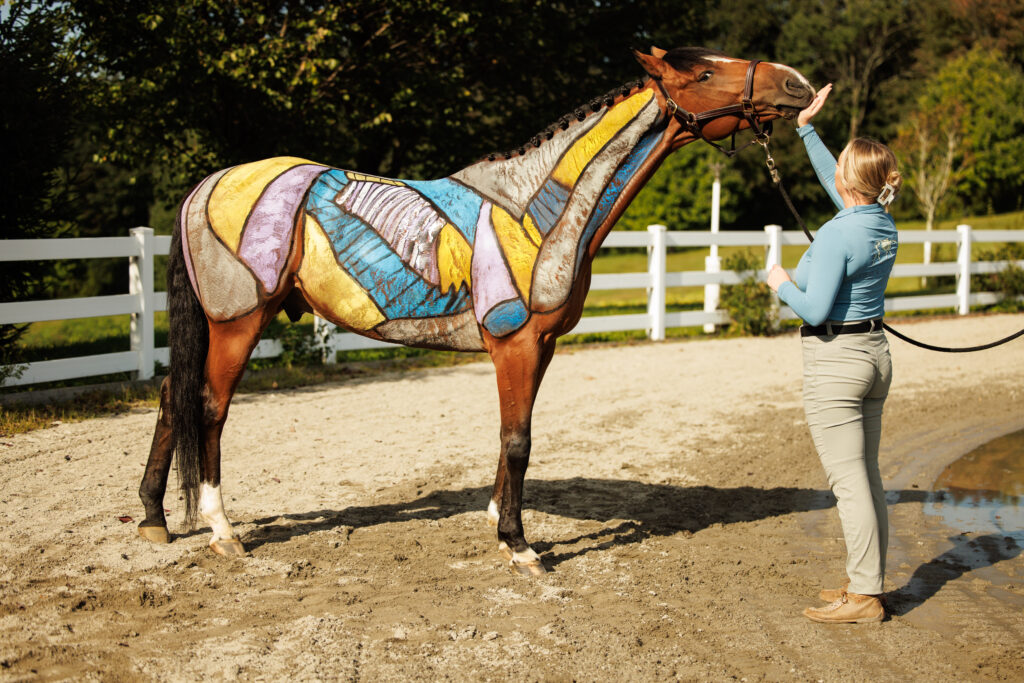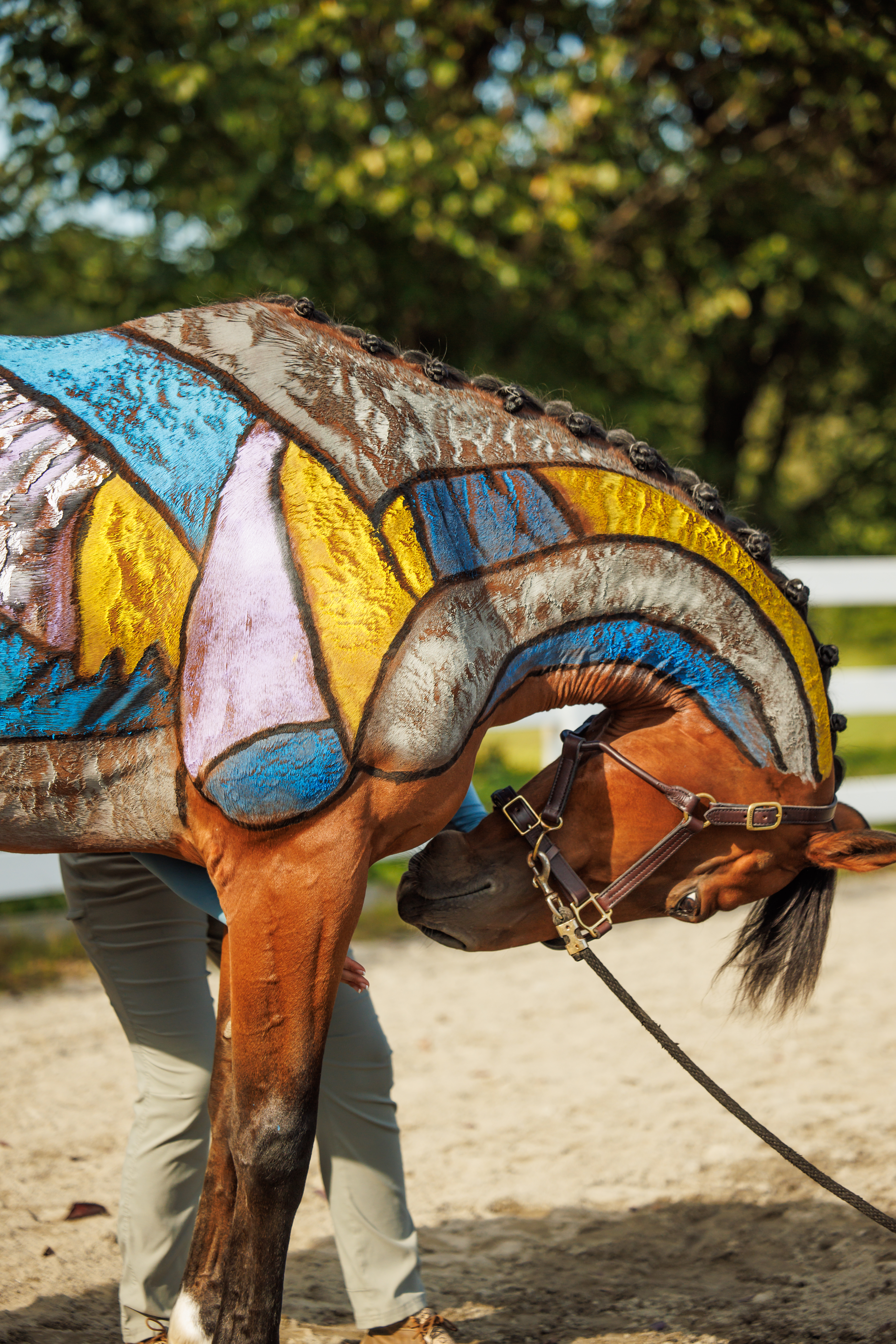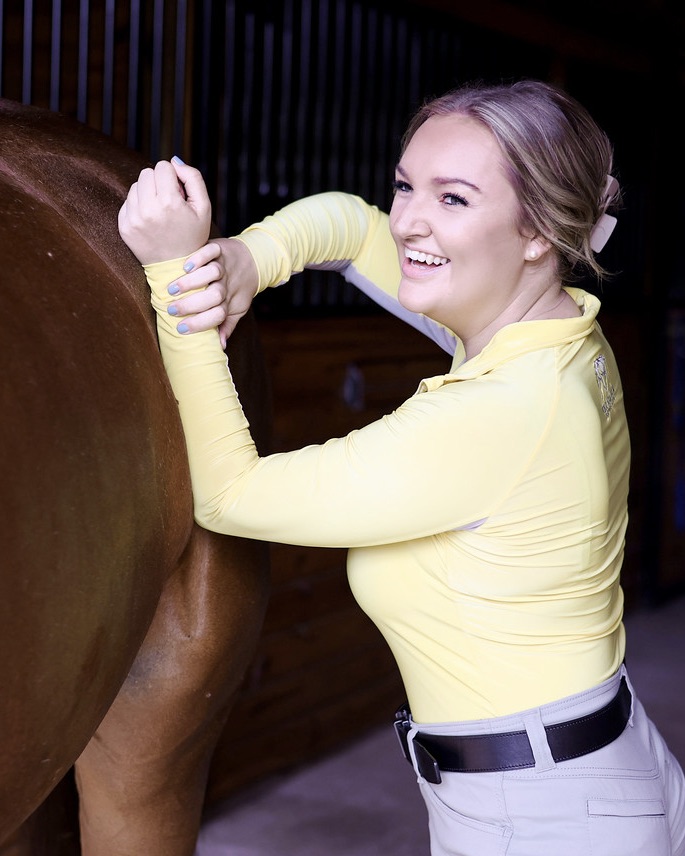Did you know your horse has approximately 700 muscles in their body? That makes up 40-60% of their entire weight! Each of these 700 muscles has a unique role in the movement and stabilization of the skeleton. That sounds important, right?
As important as it is, it’s still commonly overlooked. It’s time we change that and start prioritizing muscle health in the equine athlete!
Here are five tips for keeping your horse’s muscles happy & healthy:
1. Make Time for Pre- & Post-Ride Rituals
Create pre- and post-ride routines to ensure your horse is getting a proper warm-up and cool down to prevent injuries. This could look like hand walking your horse around the arena before mounting and after dismounting; setting a timer to make sure you take enough time to warm-up and cool down; riding in a lighter seat while they warm-up; starting and ending your ride with a loose rein to encourage stretching; incorporating a post-ride stretching routine while their muscles are still warm, etc. Being mindful about how you warm-up and cool down your horse will help with injury prevention, increased circulation, recovery, and improved range of motion.
2. Check the Fit of your Tack
Prioritize getting your tack checked every 6-12 months. If your horse’s body is going through changes (young growing horses, fluctuating weight, building/losing muscle, etc.), their tack may need to be checked more frequently. Ill-fitting tack may result in muscle atrophy, discomfort, sores, swelling, compensation patterns, etc.
3. Create a Healthy Training Plan
Keeping your horse in consistent work is great for their overall wellness! But it’s also important to remember to give them enough time off to recover. In addition to rest, it’s worth noting that the type of exercise they’re doing matters. For example, throwing on a halter and having your horse run in circles on the lunge isn’t going to be as beneficial for them as pole work or hill work would be. You want to properly develop their muscles over time in order to prevent injuries and bad habits.

4. Nourish your Horse
All of that hard work training isn’t going to matter if your horse isn’t being properly nourished and hydrated. It’s important that your horse is receiving all of the necessary nutrients in order to build muscle, recover, and feel/perform their best. It’s a great idea to work with a vet and a nutritionist to ensure your horse is getting everything they need.
5. Stay Consistent with your Horse’s Wellness Team
Your horse’s body needs proper maintenance to continue feeling and performing their very best. It’s crucial to stay consistent with your wellness team, even when your horse seems to be in peak condition.
Professionals that you should consider including in your wellness team based off of your horse’s personal needs:
- Farrier (4-8 weeks on average)
- Vet (as needed but typically at LEAST twice a year for vaccines/wellness exams)
- Dentist (6-12 months on average)
- Chiropractor (as needed)
- Bodyworker/PEMF Practitioner (per recommendation of practitioner – on average between 1-6 weeks)
- Saddle Fitter (6-12 months on average)
- Nutritionist (as needed)
- Bit & Bridle Fitter (as needed)
It’s important to remember that each and every horse is different and requires a custom maintenance plan to cater to their specific needs. Not every horse will have the same roster of professionals and maintenance schedule. Have a discussion with your vet about your horse’s personal needs to create a plan going forward. And remember, healthy muscles = a happy horse!


